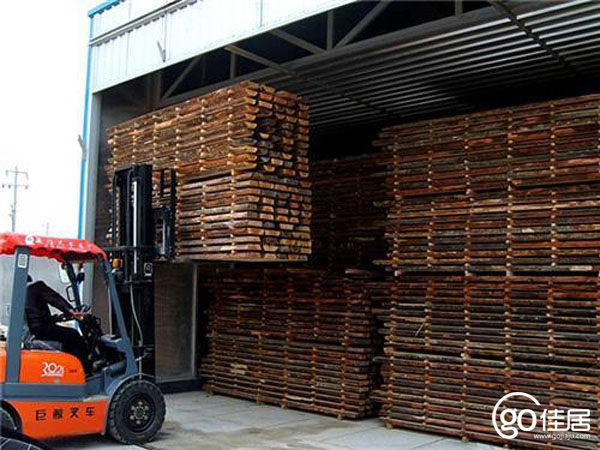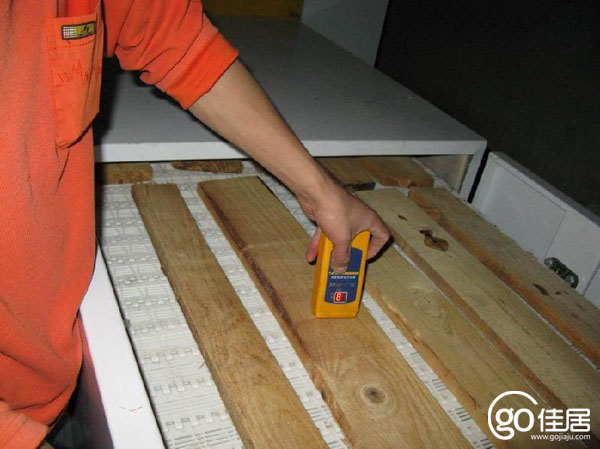Drying of wood has always been an important process for classical furniture production because it is related to the quality of furniture and has an important role in extending the service life of furniture. The quality of the wood drying process largely determines the stability and practicality of the manufactured furniture. After a few hundred years, mahogany furniture in the Ming and Qing dynasties had few shrinkage cracks, thanks to the drying of wood. Where should European style furniture tell you how to dry the woods ? How to deal with wood drying in ancient China? During the Ming and Qing Dynasties, it was very particular about the drying process of mahogany materials. The mahogany rounds should be stored in the cool, ventilated place for more than 10 years. After that, the round saws should be sawn into 6-7 cm thick plates, then placed in a cool and well-ventilated place, flattened, suspended, and sprinkled with quicklime to kill. Insects, water absorption, and the role of stereotypes, place months to years. During the placement, the material should be poured regularly and the redwood should be dried evenly to avoid deformation. In addition to the natural drying of wood, it must be dried. There are no modern drying ovens in ancient China. How do you dry wood? Although there was no drying oven in ancient times, there was a kiln. Before the production of furniture, the mahogany sheet is sent to the kiln for drying two or three times. Each time the temperature is not too high, moisture in the wood must be discharged little by little. Because the wood is too dry it is not conducive to long-term storage. Afterwards, place in a cool, ventilated place so that the wood absorbs the moisture in the air in a natural way. After a few months, mahogany that has been treated for a long time can be used to make furniture. The wood thus dried is used to make mahogany furniture, and its wood properties and craftsmanship are extremely superior. The Ouyifeng furniture thinks this is the reason why handed down old mahogany furniture is expensive. Conventional methods for drying wood (1) Air drying, referred to as air-drying, is the main form of natural drying. It uses the heat of the atmosphere in the natural world to evaporate the moisture of the wood to achieve the purpose of drying. Dry air can be divided into normal air dry and forced air dry. Forced dry air has good drying quality, and the wood does not cause mildew and discoloration. It can reduce end cracks. Drying time can be shortened by 1/2 to 2/3 compared to ordinary air drying, but the drying cost is increased by about 1/3. The advantages of atmospheric drying are: simple technology, easy implementation, energy saving, relatively economical, and can meet the requirements of air-drying materials. (b) Room Drying refers to drying the wood by artificially controlling the parameters of the drying medium in a conventional drying chamber. Room drying can be divided into low-humidity chamber dry, normal greenhouse dry, and high-temperature greenhouse dry, depending on the temperature of the drying medium. The so-called low temperature, room temperature, and high temperature mean that the temperature of the medium can reach the ranges of 50-60°C, 100°C, and 100°C or more during the drying process, respectively. The dry cycle in the low-greenhouse is long, but it can guarantee the quality of drying and maintain the natural color of the wood. The effect of the normal greenhouse on the properties and color of the wood is small and it is generally allowed. High-temperature greenhouses can be divided into two types: dry air in high-temperature chambers using wet air as medium, and high-temperature greenhouses using atmospheric pressure superheated steam as medium. The high-temperature drying cycle is short, but it has an effect on some of the wood properties, making the wood surface hard, not easy to plan processing, severe when it becomes brittle, zoom, easy to damage, darker color, affect the appearance, should be based on the species of dried wood , thickness, use, drying chamber performance and other conditions, the correct application of the above three types of chamber stem. Dry room has the advantages of good drying quality, short drying cycle (many times faster than air drying), dry conditions that can be flexibly adjusted, and can be dried to any final moisture content lower than the dryness of the air, and the loading, unloading, and transport operations are concentrated. Mechanize and automate. The disadvantages are that the equipment and process are more complicated than air-dry, with high investment and high cost. The above is how to dry wood separately For the full content of the article, you may want to learn more about furniture wood and you can follow the GO Home Information Channel.
The XUNDA Petrolatum Primer is a tacky adhesive primer for use with Petrolatum Tape .High melting point petrolatum in hydrocarbon solvent .
High melting point petrolatum in hydrocarbon solvent. The primer is a semi-solid paste . Petrolatum primer is a semi solid paste for brush application.
Property
Typical Value
Specific Gravity
0.98
Flash Point
≥35℃
Covering Capacity
5m2/ liter
Wet Film Thickness
230 micron
Dry Film Thickness
160micron
Dry Time
60 minutes
Temperature Range
For Application
For Service
-5℃ -50℃
70℃ maximum
Petrolatum Primer Denso Primer,Petrolatum Primer,Petrolatum Tape Primer,Petroleum Primer Jining xunda pipe coating materials co., ltd. , https://www.pipeanticorrosion.com
